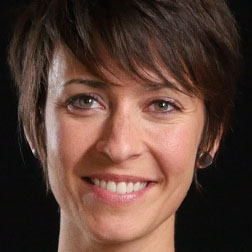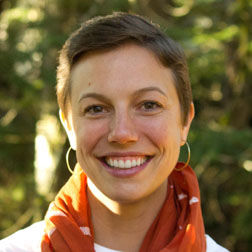How can we become more capable of working with whatever comes up in our lives in a way that actually supports the growth and evolution of all human beings?
When we cultivate presence, we are more able to work with the here and now, take more perspectives, and embrace more of our experience—including dissonance and conflict.
We have more choices, and more capacity to address the full complexity of what is happening—in the energetics of a room, in the emotional domains, in the realms of power and authority, decision making, and conflict.
Being able to open up to a deeper reality beyond our own notions of what’s going on in a group begins with three essential moves:
- Owning your first person experience.
- Recognizing and naming your experience.
- Moving from autonomy to communion, or I to We.
Often, the last move can be quite challenging.
How do we catalyze a group to become more coherent, and deepen the quality of engagement and intimacy?
One of the pillars of Flex-Flow experiences in groups occurs when individuals shift their awareness from first person experience to the experience of the group or the whole.
As facilitators, leaders, and participants, we can generate greater coherence and enhance the quality of our work together by shifting our group’s awareness from “I to We.”
By shifting our attention to others, sharing our impressions of the collective space, and noticing coherence and common characteristics of the moment we can significantly heighten our participation in the group awareness.
Here are some practices we’ve explored in our workshops that you can take into your life and work:
CULTIVATING COHERENCE AND COMMUNION IN GROUPS
- Try inviting your group or team to share their observations about the physical space you are in: what do they notice about the lighting, colors, the feel of the space? What sounds, smells, and textures do they appreciate? (This can be especially helpful for virtual teams.)
- If your group is virtual, invite them to imagine and conceptualize the virtual room your group is inhabiting together. What kind of physical space would this group like to inhabit?
- Sometimes a group can be aware of its explicit project or goal, yet it’s members can be misaligned on the level of shared purpose or intention. Invite each participant to share their personal intention for the meeting or for your group’s shared efforts and goals.
- Invite input as to why each participant is here, what their hopes are for the gathering. Explore what people notice right now, in their sensory perceptions, in their bodies, and what it feels like to participate.
- Take time to appreciate the unique personal qualities of the other individuals as contributors to the group.
- Often, deep coherence and alignment arises paradoxically when a group is able to articulate its differences, obstacles, or struggles. As a leader or facilitator, explore giving voice to the unspoken tensions or struggles you perceive, and invite the group to bring these “shadow” elements into open discussion and exploration.
- Name the “obvious.” In other words, reflect back to your group what you are seeing, sensing and hearing. Recognizing clearly what is arising in this moment invites us to become more open to ourselves and to each other.
Hopefully, after reflecting on these practices, you’re curious about how these kinds of techniques could be used effectively with a wide variety of group cultures and styles. To deepen your learning, you might find it helpful to reflect on these questions about your own approach:
- Are there other effective practices or techniques you’ve used or experienced that have cultivated a sense of “we”?
- What framing would you employ if you were bringing these practices into a variety of different group cultures and styles?
- Where do you notice your edge as a facilitator being challenged when you imagine yourself engaging these practices in your groups and teams?
Individual and collective development are interrelated, because as we develop, our experience in groups changes.
We become more at ease, less fearful, less instinctively competitive and self-protective. We feel more freedom to be ourselves, and we have fewer struggles with the otherness of others.
We have access to creativity, we enjoy the support of others, and at the same time, we are willing to experience more authentic challenges. We live with liveliness and vigor.



